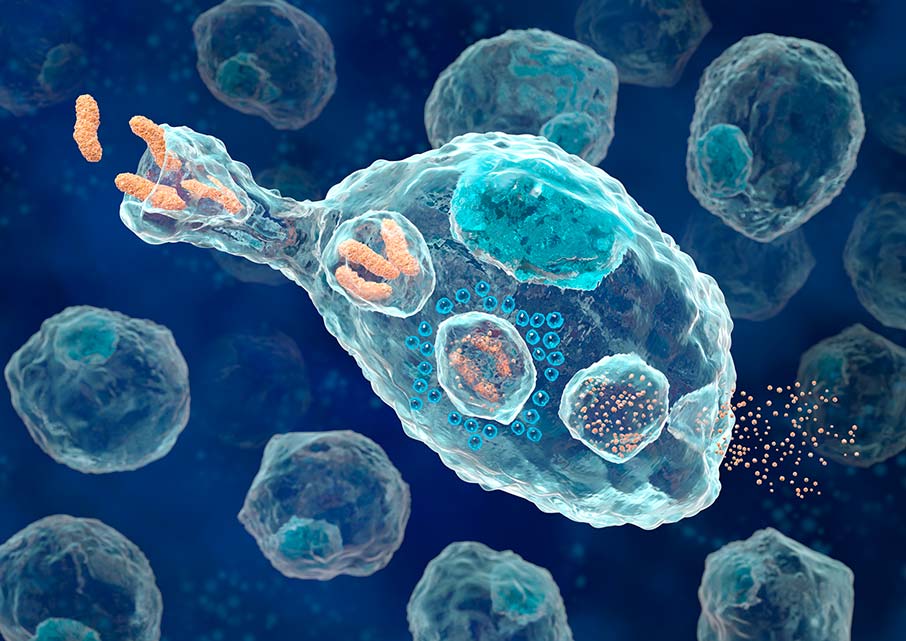What are the the body's defenses? How do they differ from each other?
1 Answer
There are different stages of defence, the so-called 'Lines of Defence'. They are explained below.
Explanation:
First line of defence:
The first line of defence is the first barrier to encounter diseases. This defence can also be seen as the outside defence system.
The first line of defence contains for example:
- Skin
- Mucus
- The epithelium of our intestines
All off the above prevent a disease from easily entering our body. A disease enters when it has crossed a membrane. So a particle inside our intestines is not yet inside our body since it has not crossed any membrane.
Second line of defence:
The second line of defence is necessary once a disease has bypassed the first line of defence. The second line of defence is non-specific. Some examples are for example:
- Phagocytosis. Phagocytes can find cells that are not our own, and kill it via apoptosis. There are a few types of phagocytes which work non-specifically. Some phagocytes can engulf infected cells and 'lock them away'. This is showed schematically in the picture below. The phagocyte can then kill it and become an antigen presenting cell (APC).
- Fever. By increasing the body temperature, some diseases cannot function properly, for example, proteins can get denatured.
- Complement system. This system helps the phagocytes to find the infected body cells or other stuff that is not working properly. Cytokines are used as transmitter particles, that can signal other cells to do something.

Third line of defence:
In this line of defence, antibodies and lymphocytes encounter the diseases. The third line of defence is specific and can be adapted to many forms of diseases. This type of defence is activated by a phagocyte. The phagocytes take a part of the virus with it and present it (as an APC, antigen presenting cell) to a T helper cell.
In a series of reactions and the making of different types of cells, the following cells are made:
T cells:
- Cytotoxic T cell (will search cells with a specific antigen)
- Memory T cell (will cause cellular immunity)
B cells:
- Plasma cell (will make antibodies)
- Memory B cell (will cause humoral immunity)
So the lines of defence differ in their specificity. Fever can counter a few diseases, but one cytotoxic T cell can counter only one disease. The time to counter a disease also differs from disease to disease.
The three lines of defence work together to be able to counter diseases efficiently. If you remove one, the others will probably lose efficiency, since they have to work harder.
